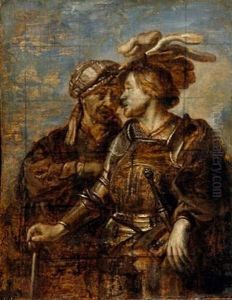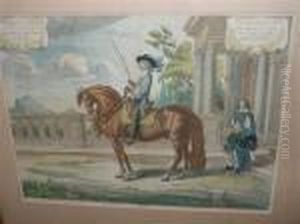Abraham Diepenbeke Paintings
Abraham van Diepenbeke was a distinguished Flemish painter, draughtsman, and designer of tapestries, born in 's-Hertogenbosch (Den Bosch) in 1596. His artistic journey is intricately linked with the Baroque movement, and he is often remembered for his contribution to the development of this style in the Southern Netherlands. Diepenbeke's initial training and influences remain somewhat obscured in historical records, but he is believed to have been a pupil of Rubens, one of the most prominent figures of the Baroque period. This tutelage under Rubens significantly shaped his artistic direction, providing him with a strong foundation in the dynamic and emotive qualities characteristic of Baroque art.
Diepenbeke's work spanned various mediums, showcasing his versatility as an artist. He was adept at oil painting, designing tapestries, and creating intricate drawings. His subject matter often included religious themes, mythological scenes, and occasionally, portraits. Notably, Diepenbeke's designs for tapestries were highly regarded, contributing to the flourishing tapestry production in the Southern Netherlands during the 17th century. These designs not only highlight his skill in composition and understanding of narrative but also reflect the opulence and grandeur associated with Baroque art.
In addition to his work in the visual arts, Diepenbeke was also involved in the design of festival decorations and ephemeral architecture, indicating his active participation in the cultural life of his time. His ability to work across different mediums and subjects underscores his adaptability and creativity as an artist.
Diepenbeke spent a significant portion of his career in Antwerp, a hub for artists and craftsmen during the 17th century. His contributions to the artistic landscape of Antwerp were considerable, and he was a respected figure among his contemporaries. Despite the high esteem in which he was held, detailed records of his life and works are somewhat limited, and many of his pieces remain unattributed. Abraham van Diepenbeke died in Antwerp in 1675, leaving behind a legacy that, while perhaps not as widely recognized as some of his contemporaries, played a significant role in the development and dissemination of Baroque art in the Low Countries.

